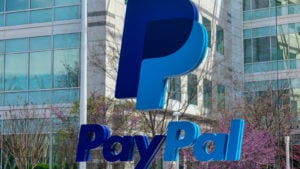In the investment space, the tech sector perennially beckons with promises of growth, innovation, and transformative potential. Among the myriad choices, three tech gems emerge as luminaries, painting a canvas of possibility in the investment realm and turning your $1,000 into a fortune.
These aren’t mere stocks but progressive shifters in innovation, market penetration, and strategic prowess. The first one has a diverse suite of products that amplifies revenue streams. Similarly, the second one’s innovative consumer-centric approach reshapes spending behaviors. Meanwhile, the third one’s semiconductor expertise navigates the tides of global demand. Each company, distinct in its domain, boasts an arsenal of strategies that reveal its potential to rewrite the investment narrative.
The article delves deep into the intricate threads of these tech titans’ strategies, unraveling the compelling reasons why these companies are not just investments but heralds of a potential financial metamorphosis.
Block (SQ)

As one of Block’s (NYSE:SQ) core segments, Square exhibited promising performance metrics. For instance, during Q3 2023, the company generated gross profit with an increase of 15% year-over-year. This growth in gross profit indicates the effectiveness of Block’s business model. This also suggests the company’s ability to generate revenue from its diverse products and services.
Furthermore, Square’s gross payment volume (GPV) increased by 11% year-over-year. This suggests continued transactional growth and utilization of Square’s payment processing services by merchants and sellers.
Notably, the growth in vertical points of sale products saw a substantial increase in gross profit, up by 29% year-over-year. This growth signifies Block’s success in catering to specific industry verticals, enhancing its product offerings, and capturing market share within targeted sectors.
On the other hand, Cash App, another integral part of Block’s ecosystem, displayed robust performance indicators during Q3. Cash App generated gross profit with a significant increase of 27% year-over-year. This growth in gross profit highlights the role of Cash App’s financial services, peer-to-peer payments, and other offerings in driving revenue growth and expanding its user base. Hence, there is a consistent growth in monthly transacting activities, reaching 55 million and growing by 11% year-over-year, demonstrating Cash App’s ability to attract and retain users within its ecosystem.
Finally, Block’s vision to attain the Rule of 40 by 2026 mentions the company’s focus on balancing growth and profitability. This goal targets mid-teen gross profit growth and an approximately mid-20% adjusted operating income margin by 2026. The Rule of 40 is a key performance indicator, and it signals Block’s capability to sustain a healthy balance between revenue growth and profitability.
PayPal (PYPL)
To begin with, PayPal (NASDAQ:PYPL) has impressive market penetration in the U.S. Over 70% of the adult population has used PayPal in the past five years. This reflects the platform’s widespread adoption and consumer trust. This proportion demonstrates PayPal’s significant brand recognition and user loyalty, reflecting PayPal’s standing as a preferred payment method for most American adults. Additionally, this is fundamental in reflecting PayPal’s stronghold in the U.S. payment ecosystem and is a strong foundation for future growth strategies.
In the same direction, introducing innovative products like the PayPal Cashback Mastercard and increasing customer engagement indicates the company’s ability to drive user behavior through strategic offerings. The 3% cashback on PayPal purchases and additional cashback on other purchases through this card resulted in customers making an average of 56 more purchases with PayPal in 2023 after adopting the product compared to 2022. Furthermore, this trend reflects PayPal’s fundamental capacity to influence consumer behavior positively through attractive incentives. Hence, this leads to heightened customer retention and usage frequency.
Additionally, the PayPal Rewards program has led with over 25 million consumers benefiting from cashback. This signifies a strategic approach to customer retention and value addition. The extensive database of over 300 million SKUs of inventory from merchant partners, integrated into the Rewards program, underscores PayPal’s ability to leverage data for customer-centric initiatives.
Overall, the data-rich environment enables PayPal to utilize AI and machine learning to power a robust shopping recommendation engine. This allows the platform to offer tailored rewards and savings to customers. Finally, integrating extensive inventory data allows for precise and personalized recommendations and enhances the continued usage of PayPal’s services.
ACM Research (ACMR)

ACM Research (NASDAQ:ACMR) has consistently delivered robust topline growth. This is a pivotal indicator of its value growth and performance in the semiconductor industry. The company’s Q3 2023 revenue with a notable 26% increase year-over-year, indicating sustained demand for its products and services.
Moreover, the 38% growth in revenue for the first nine months of 2023 highlights ACMR Research’s ability to excel despite the declining global wafer fab equipment (WFE) spending. Fundamentally, the revenue growth signifies successful market penetration and increased adoption of ACMR Research’s cutting-edge semiconductor manufacturing tools.
Additionally, ACMR Research has attained record shipments, marking a substantial 31% year-over-year increase. This signifies the company’s ability to fulfill rising demand and efficiently deliver its products. Also, the company’s ability to manage and scale its production and delivery processes efficiently, resulting in increased shipments, is a significant strength contributing to its growth trajectory.
Furthermore, ACMR Research has a diversified product portfolio. This includes single-wafer cleaning, semi-critical cleaning, electrochemical plating (ECP), furnaces, and advanced packaging tools. The portfolio reflects the company’s approach to capitalize on various facets of chip manufacturing. It can be observed in the company’s significant growth rates, such as the 33% increase in single-wafer cleaning and semi-critical cleaning in Q3 and the 42% year-to-date growth, reflecting market acceptance and demand for ACMR Research’s products.
Finally, ACMR Research’s solid gross margin of 52.9% and operating margin of 26% are standout metrics of the company’s efficiency and profitability. The gross margin exceeding the normal expected range of 40% to 45% results from various factors, such as a favorable product mix, enhanced margins in specific product lines, and currency fluctuations.
As of this writing, Yiannis Zourmpanos held long positions in PYPL and ACMR. The opinions expressed in this article are those of the writer, subject to the InvestorPlace.com Publishing Guidelines.


